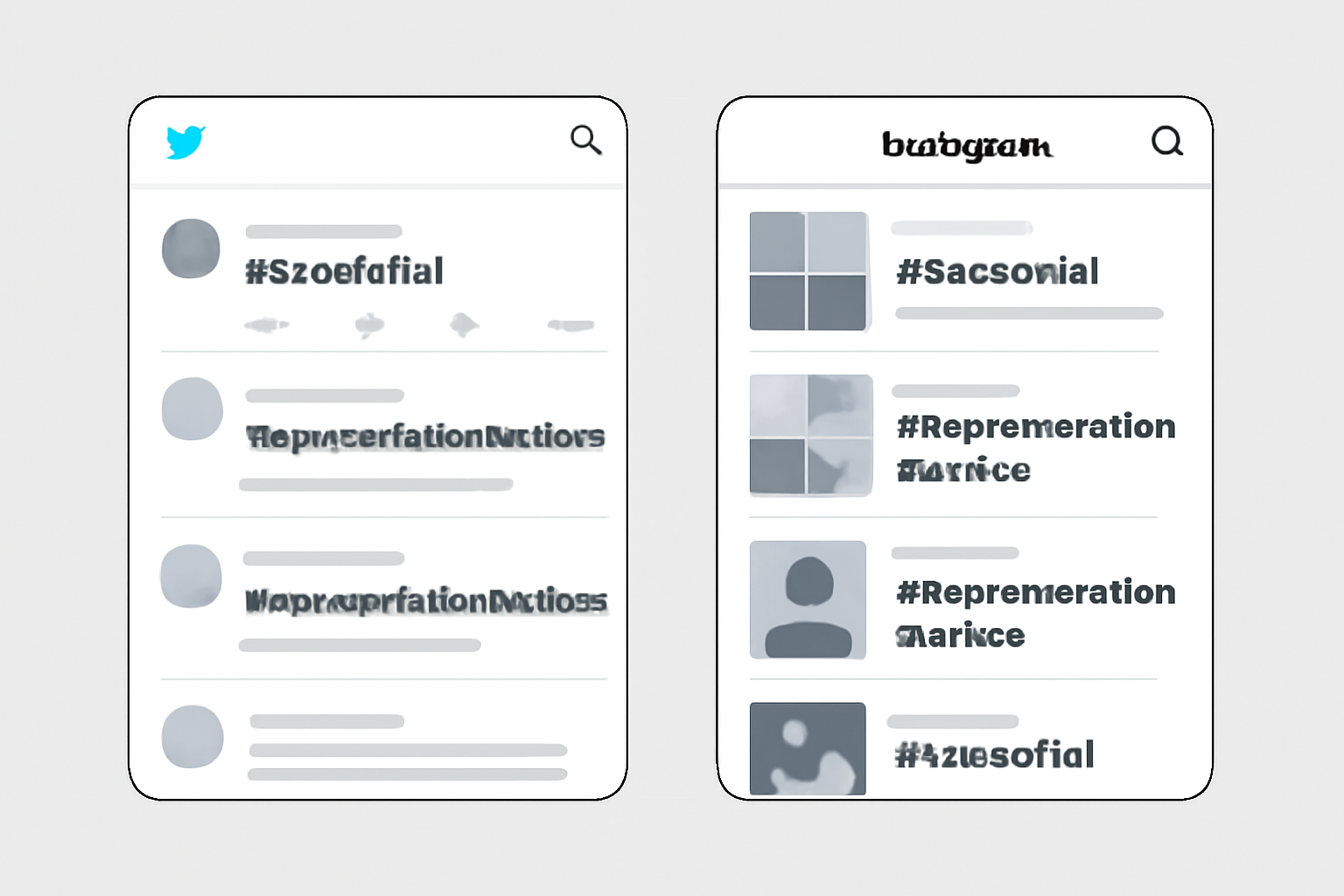When Branding Fails: Swatch’s “Slanted Eye” Ad Sparks Global Outrage
Swatch’s recent ad campaign ignited global outrage with a gesture long tied to racist caricatures. What was meant to be playful turned offensive, raising urgent questions about cultural awareness, inclusivity, and accountability in branding.

What happens when a brand built on timeless style stumbles into a controversy that feels anything but modern?
That’s the uncomfortable question facing Swiss watchmaker Swatch after its latest ad campaign ignited global outrage. What was supposed to be a playful piece of marketing quickly unraveled into a textbook example of cultural insensitivity. The focal point: an Asian model posing with fingers pulled to the side of her eyes a gesture long associated with racist caricatures and painful stereotypes.
In an age where brands live and die by perception, Swatch’s mistake has struck a nerve, reminding us how fragile reputation can be and how crucial cultural awareness has become in a hyperconnected world.
A Watchmaker Known for Color, Now Stained by Controversy
Swatch has built its legacy on vibrancy, accessibility, and fun. Since its founding in the 1980s, the brand has stood as a colorful counterpoint to Switzerland’s luxury timepieces. It’s the brand of youthful rebellion, artistic collaborations, and cheerful wristwear.
Which makes this misstep even more jarring. The “slanted eye” gesture doesn’t align with Swatch’s playful, inclusive image it undermines it. Instead of lighthearted, the ad came across as dismissive, harmful, and outdated. In a matter of hours, the campaign shifted from celebration to crisis.

Why This Gesture Hurts
To some, the gesture might look trivial a careless pose in a photoshoot. But for millions of Asians worldwide, it is loaded with decades of racist mockery. It has been used to stereotype, belittle, and dehumanize, reducing diverse cultures and identities to a single offensive caricature.
That Swatch allowed such imagery to make it through layers of creative review, approval, and release is telling. It highlights how cultural blind spots can persist even in global brands that operate across continents. What feels harmless in one boardroom can reverberate as deeply hurtful across entire communities.
In today’s environment, ignorance is no excuse. Brands are expected to know better and do better.
Outrage in the Age of Social Media
If history shows anything, it’s that public outrage has always followed cultural insensitivity. What’s different today is the speed and scale at which backlash spreads. Within minutes of the ad’s release, screenshots were posted online, hashtags multiplied, and global criticism swelled.
From Twitter threads dissecting the history of the slanted-eye stereotype to Instagram reels demanding accountability, social media turned a single image into a global firestorm. News outlets picked up the story almost instantly, amplifying the criticism and forcing Swatch into reactive damage control.
What once might have been a regional misstep now became a worldwide scandal.

The Apology: Too Little, Too Late?
Swatch responded quickly, issuing an apology and pulling the ad. The company admitted it had made a mistake and expressed regret for offending communities.
But the apology raised further questions:
- Was it genuine or a standard PR template?
- How did such a campaign get approved in the first place?
- What structural changes would Swatch make to ensure it never happens again?
For many, words alone won’t suffice. In an era where brand accountability is scrutinized, consumers demand transparency and structural change, not just reactive statements.
Branding Lessons from a Cultural Blind Spot
The Swatch controversy offers a sobering reminder: branding is not just about design and slogans. It’s about values, awareness, and the cultural messages baked into every campaign.
Here are some critical takeaways:
- Representation Requires Respect
Inclusion isn’t just about featuring diverse faces. It’s about understanding the cultural contexts and sensitivities those faces carry. - Global Brands Need Global Awareness
A gesture dismissed in one office may be deeply offensive worldwide. Multinational companies must actively test campaigns against cultural perspectives. - Diversity in Decision-Making Matters
A diverse team could have flagged this ad long before release. Homogeneous leadership risks tunnel vision.
Accountability Must Be Structural
A single apology isn’t enough. Brands must adopt clear cultural review processes, engage communities, and embed inclusivity into their DNA.

The Pattern of Corporate Missteps
Swatch is not alone. Many major brands have stumbled into controversy through tone-deaf ads:
- A clothing company released a hoodie that read “Coolest Monkey in the Jungle,” sparking outrage for racial insensitivity.
- A beverage giant faced backlash for trivializing protests in an ad starring a celebrity handing a soda to police.
- A fashion house showcased runway designs featuring nooses, prompting anger for glamorizing tragedy.
Each case illustrates how creative ideas, unchecked by cultural awareness, can spiral into public relations disasters. The Swatch incident joins this long list, proving that even established, beloved brands are not immune.
Why Apologies Alone Don’t Heal
An apology may calm headlines, but it doesn’t erase the impact. For Asian communities worldwide, the “slanted eye” gesture is a wound tied to childhood bullying, media caricatures, and systemic exclusion. Seeing it perpetuated by a global brand reopens that wound.
If Swatch wants to rebuild trust, it must move beyond regret statements. It needs to engage directly with communities harmed, amplify Asian voices in future campaigns, and show through action that it understands why its ad failed.
Only then can the company shift the narrative from scandal to growth.
A Call for Brands to Evolve
This controversy isn’t just Swatch’s problem it’s a wake-up call for all brands. Cultural awareness cannot be an afterthought. It must be a non-negotiable part of the creative process.
As consumers, we live in an era where values drive purchasing decisions as much as price or product. People want to support brands that reflect respect, inclusivity, and responsibility. Those that fail risk more than outrage they risk irrelevance.
The real test for Swatch, and for all companies watching, is whether they treat this moment as a blip to be forgotten or a turning point to transform their practices.
The Human Cost of Carelessness
It’s easy to talk about this as a branding blunder, but at its heart, this is a human issue. For the child who endured taunts on the playground, for the adult who faced workplace discrimination, for the countless people reduced to stereotypes, the Swatch ad wasn’t just careless it was painful.
When brands echo harmful gestures, they amplify that pain on a global scale. That’s why accountability matters. That’s why representation matters. And that’s why companies must learn that creativity without consciousness can wound as much as it entertains.
Conclusion: A Timepiece for Reflection
Swatch’s slogan has long revolved around fun, youth, and creativity. But in this case, its ad became a reminder of the past one filled with outdated stereotypes that should have been retired long ago.
As the company faces backlash, it has an opportunity to reflect, reform, and rebuild. The “slanted eye” controversy can remain a stain on its legacy or it can become the moment Swatch redefines itself as a leader in responsible, inclusive branding.
Time will tell. But for now, the world has delivered its verdict: when branding fails, it fails loudly.
Sources:
- People reports that Swatch pulled the ad globally and issued an Instagram apology for any “distress or misunderstanding,” but many commented that the apology felt evasive and lacked true accountability.People.com
- AP News states that the campaign featured an Asian model making the offensive gesture, and that Swatch apologized both in English and Chinese via Weibo and Instagram, removing the ad worldwide.AP News
- Reuters highlights that Swatch issued its apology and pulled all related images. It notes that China, Hong Kong, and Macau account for approximately 27% of Swatch Group’s sales, underlining the controversy's business impact.Reuters




